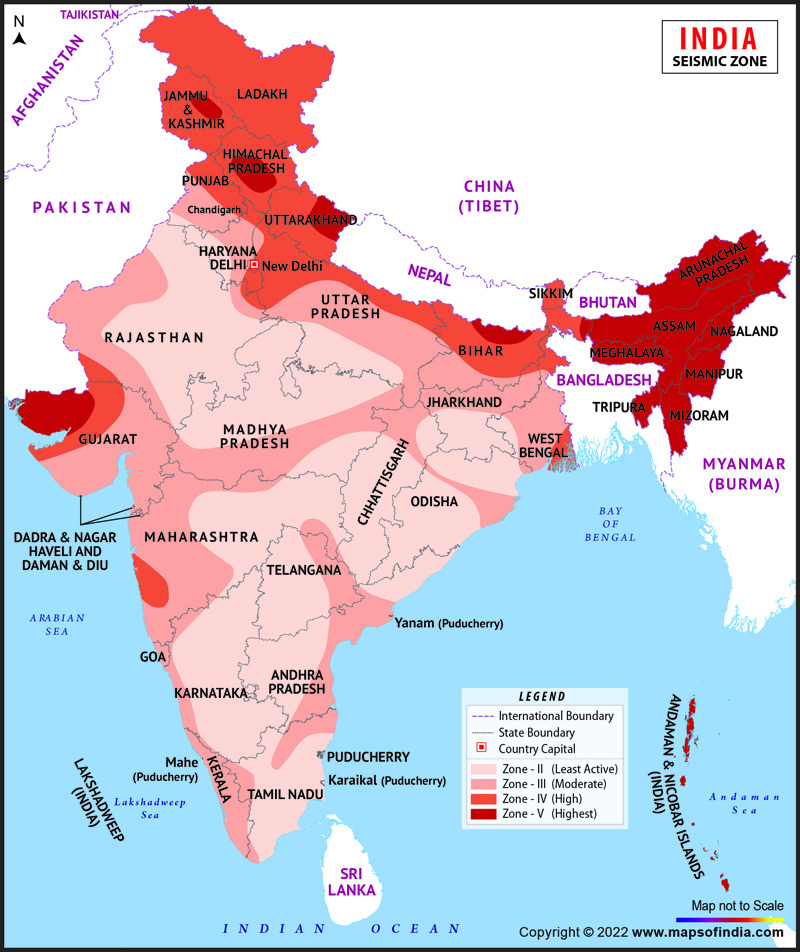About Seismic Zoning Map of India
The Geological Survey of India (G. S. I.) first published the seismic zoning map of the country in the year 1935. With numerous modifications made afterwards, this map was initially based on the amount of damage suffered by the different regions of India because of earthquakes. Color coded in different shades of the color red, this map shows the four distinct seismic zones of India. Following are the varied seismic zones of the nation, which are prominently shown in the map:
- Zone - II: This is said to be the least active seismic zone.
- Zone - III: It is included in the moderate seismic zone.
- Zone - IV: This is considered to be the high seismic zone.
- Zone - V: It is the highest seismic zone.
Importance of India's Seismic Zoning Map
This kind of map is mainly used by the Department of Disaster Management of the different state governments in the country. This map helps them in planning for a natural disaster like earthquake. An Indian seismic zoning map assists one in identifying the lowest, moderate as well as highest hazardous or earthquake prone areas in India. Even such maps are looked into before constructing any high rise building so as to check the level of seismology in any particular area. This in turn results in saving life in the long run.
Last Updated on : November 13, 2025
India general Maps
